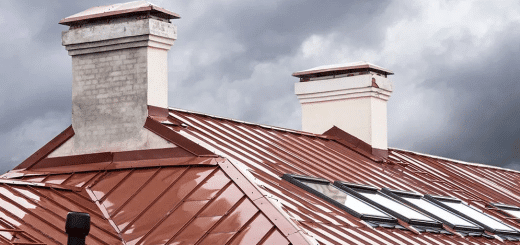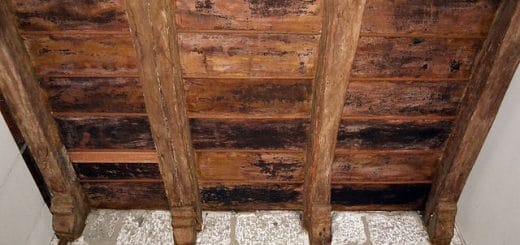How to Treat Mold in the HVAC System
MoldMold is a type of fungus that grows in damp or humid conditi... More growth on your walls, floors, ceiling or any other place in your home or building is certainly unsightly. But worse, this uninvited guest will slowly consume the building material on which it sits as it disperses its sporesSpores are microscopic reproductive units of fungi or mold t... More into the breathing air in search of new breeding grounds.
One of the common places moldMold is a type of fungus that grows in damp or humid conditi... More is found is the HVAC system. When it grows, the situation is deemed more dangerous as the sporesSpores are microscopic reproductive units of fungi or mold t... More are pushed by the air flow in the system throughout the rest of the home or building. This in turn can trigger a number of allergic reactions and respiratory issues like watery eyes, itchy eyes, runny nose, coughing and even a respiratory infectionInfection is the invasion and multiplication of harmful micr... More in the long run.
Common Causes of Mold in the HVAC System
Even though it’s common for moldMold is a type of fungus that grows in damp or humid conditi... More to grow in the air ducts because of trapped moisture, it’s incredibly dangerous. During spring and summer, cool air is pushed throughout the ducts and leaves moisture trapped within the walls of the ducts. In just a few days, moldMold is a type of fungus that grows in damp or humid conditi... More sporesSpores are microscopic reproductive units of fungi or mold t... More will accumulate in this area and possibly spread throughout the rest of the system.
If this has become your situation, it’s best to hire a mold removal professional. But if you’re willing to try the DIY way first, you should follow these steps.
How to Remove Mold from the HVAC System
A number of natural cleaners and chemicals can be used to remove moldMold is a type of fungus that grows in damp or humid conditi... More. While some will prove to be more effective than others, you’ll want to try out each until you see results.
Trying to remove moldMold is a type of fungus that grows in damp or humid conditi... More within your air ducts can be a tricky process due to the challenge of cleaning an enclosed system. So you might have to remove some parts of the system to reach the moldMold is a type of fungus that grows in damp or humid conditi... More. But once you have full access to the infected area, follow these steps.
- Wear personal protection. It’s important to protect your health and safety first and foremost when dealing with any type and amount of moldMold is a type of fungus that grows in damp or humid conditi... More. This includes wearing proper eyewear, mask, and gloves to prevent any direct contact with the moldMold is a type of fungus that grows in damp or humid conditi... More sporesSpores are microscopic reproductive units of fungi or mold t... More.
- Turn off the HVAC system. When the system is running, moldMold is a type of fungus that grows in damp or humid conditi... More sporesSpores are microscopic reproductive units of fungi or mold t... More can be blown directly into you with the air flow. Turning the system off will help to prevent direct contact with the moldMold is a type of fungus that grows in damp or humid conditi... More sporesSpores are microscopic reproductive units of fungi or mold t... More.
- Identify the cause of moldMold is a type of fungus that grows in damp or humid conditi... More. To prevent the problem from coming back, you’ll want to find out what caused the moldMold is a type of fungus that grows in damp or humid conditi... More in the first place. So if there is a water leak in the air conditioning unit or the moisture levels in the home or building are too high, excess condensation is likely to remain in the ductwork until the issue is fixed.
- Clean the air vent register. Before using any chemicals to tackle the moldMold is a type of fungus that grows in damp or humid conditi... More, first close the air register to prevent any more sporesSpores are microscopic reproductive units of fungi or mold t... More from escaping into the breathing air. Spray the cover of the vent with vinegar and allow it to sit for about an hour. Then wipe the cleaner away with paper towels, placing them into a heavy-duty trash bag when you’re done.
- Remove the air vent cover. After taking out the screws from the cover, place it upside down on top of a plastic bag to prevent any sporesSpores are microscopic reproductive units of fungi or mold t... More from landing on the floor. Repeat the process of spraying the back of the air register, allowing it to sit for another hour and wiping it down with paper towels.
- Look for moldMold is a type of fungus that grows in damp or humid conditi... More in the insulationInsulation is a material used in buildings to reduce the tra... More. MoldMold is a type of fungus that grows in damp or humid conditi... More loves to inhabit insulationInsulation is a material used in buildings to reduce the tra... More due to its porousPorous describes a material that contains small openings or ... More surface and ability to hold moisture. If any insulationInsulation is a material used in buildings to reduce the tra... More is in close proximity to your duct work, inspect it carefully. If you do find any amount of moldMold is a type of fungus that grows in damp or humid conditi... More, it must be removed and replaced to prevent the growth from spreading.
- Clean the air ducts. If there is no infestation within the ductwork, be sure to spray the vinegar onto the metal and allow it to sit for another hour. Don’t forget to wipe it again with paper towels. For spots that are more challenging to reach, you’ll have to take off part of the ductwork, or call a mold remediationMold remediation is the process of identifying, removing, an... More professional for help.
Because it’s a natural cleaner that penetrates the surface of the moldMold is a type of fungus that grows in damp or humid conditi... More and attacks the membrane, vinegar is often the best over-the-counter cleaner to use against moldMold is a type of fungus that grows in damp or humid conditi... More. But remember that removing any type of moldMold is a type of fungus that grows in damp or humid conditi... More is a dangerous and difficult chore due to the sporesSpores are microscopic reproductive units of fungi or mold t... More released in the process and their ability to affect new surfaces.
If you find the moldMold is a type of fungus that grows in damp or humid conditi... More has come back or vinegar isn’t effective against the moldMold is a type of fungus that grows in damp or humid conditi... More, other cleaners to use include Lysol, baking soda, tea-tree oil or other cleaners available at your local hardware store. Keep in mind that some chemicals are more effective than others, so you’ll have to do a little experimenting if the first option doesn’t work.
Professional Mold Removal
If you just can’t seem to remove the moldMold is a type of fungus that grows in damp or humid conditi... More yourself or the moldMold is a type of fungus that grows in damp or humid conditi... More has become an infestation in your home, it’s time to call in the professionals. A licensed, trained, and experienced contractor uses products specifically made to remove moldMold is a type of fungus that grows in damp or humid conditi... More at the source, penetrating deep within the surface and attacking the membrane. They will also be able to identify the cause of the moldMold is a type of fungus that grows in damp or humid conditi... More so you can prevent the problem from re-occurring in the future.
When searching for a mold removal company, it’s best to choose one that is reputable, licensed, trained and experienced to ensure the moldMold is a type of fungus that grows in damp or humid conditi... More is fully removed when they leave. They should also offer water damage restorationWater damage restoration is the professional process of clea... More to address and repairRepair is the act of fixing or restoring damaged property, m... More any damaged areas in your home to help with keeping the moldMold is a type of fungus that grows in damp or humid conditi... More away.
Finally, after the moldMold is a type of fungus that grows in damp or humid conditi... More is removed, many contractors will work with your insurance agency during the claims process, so you don’t have to worry about the paperwork. Just be sure that your HVAC system is running efficiently, and moisture levels are kept below 50% to prevent moldMold is a type of fungus that grows in damp or humid conditi... More growth.












